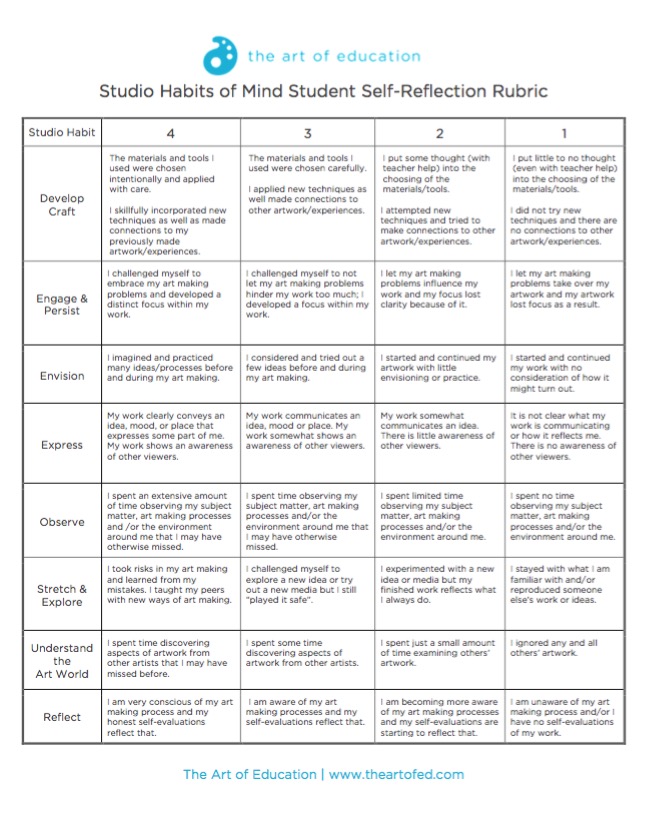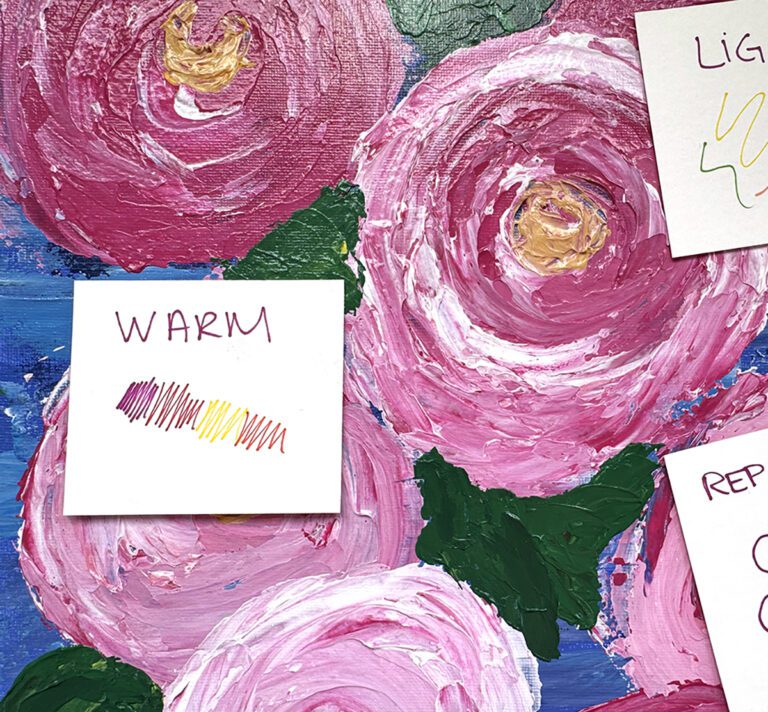The Studio Habits of Mind (SHOM) can be a phenomenal framework for organizing your Student Learning Outcomes, daily targets, essential questions, and more!
Whether you teach from local or National Standards, using SHOM can help define your planning and intentionally emphasize important skills.
This year, I wanted to take SHOM one step further in my classroom by having the students really use and understand them. I created a self-assessment rubric that students use during and at the end of each project.
The rubric is inclusive, and can be quite overwhelming at first glance. I included all 8 habits with a 4-1 scale. This rubric aligns with our district’s instructional framework model. Download your copy now.
Download Now
Because it includes so much information, the students generally only concentrate on 3-5 habits per project. Working together, we determine which habits best fit with our current project and mark those as areas that need reflection. Students reflect both during and at the end of a project.
There are many benefits to having students use the same rubric for each unit. Students are able to identify the habits easily, and they have clear expectations of what skills we are working on as the quarter progresses.
If the Studio Habits of Mind are new to you, check out these classroom posters for a quick introduction to the framework. For even more information, consider the original source, Studio Thinking 2 by Hetland, Winner, Veenema and Sheridan (2013).
How do you use the Studio Habits to guide your curriculum planning?
Do you use the habits for any type of assessment?
Magazine articles and podcasts are opinions of professional education contributors and do not necessarily represent the position of the Art of Education University (AOEU) or its academic offerings. Contributors use terms in the way they are most often talked about in the scope of their educational experiences.





